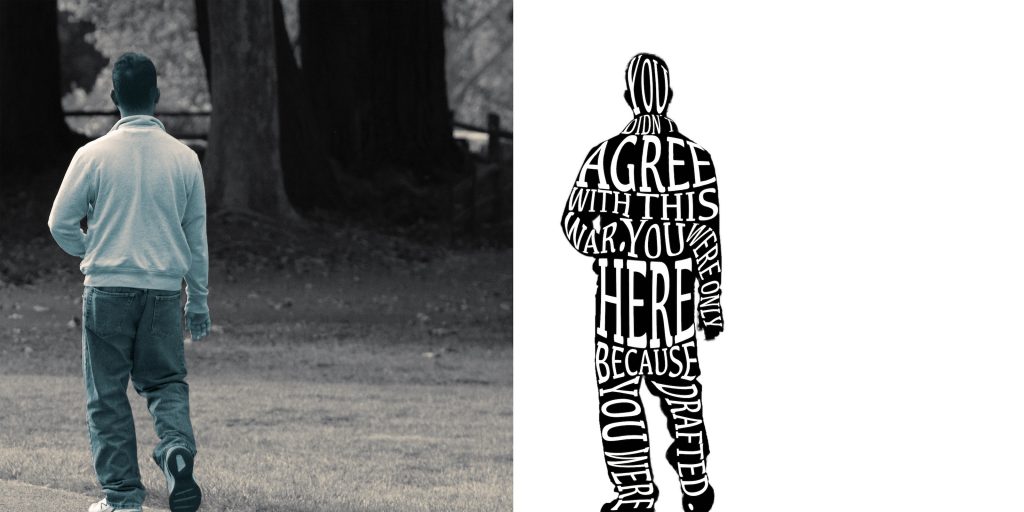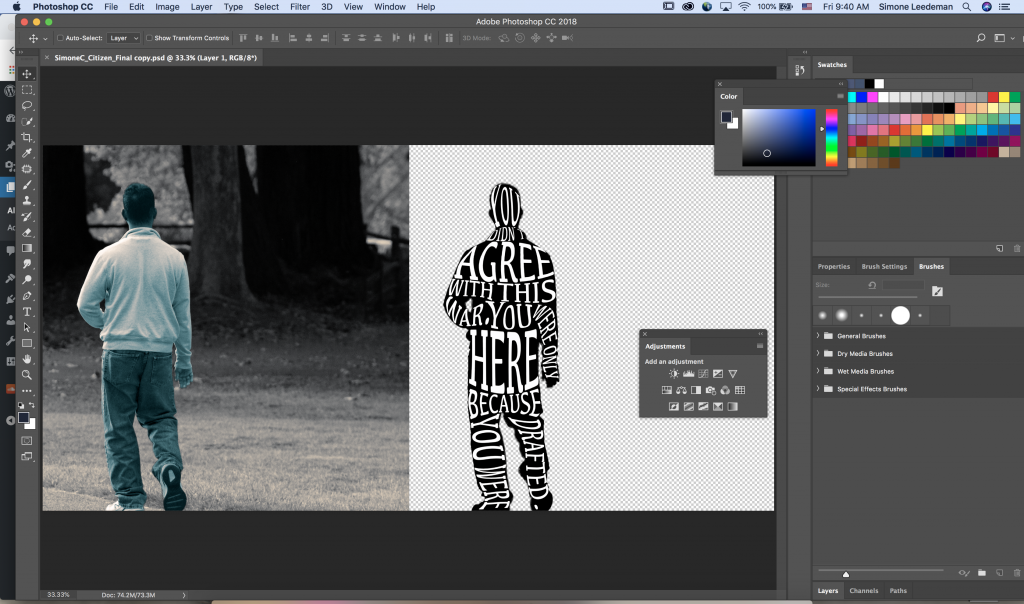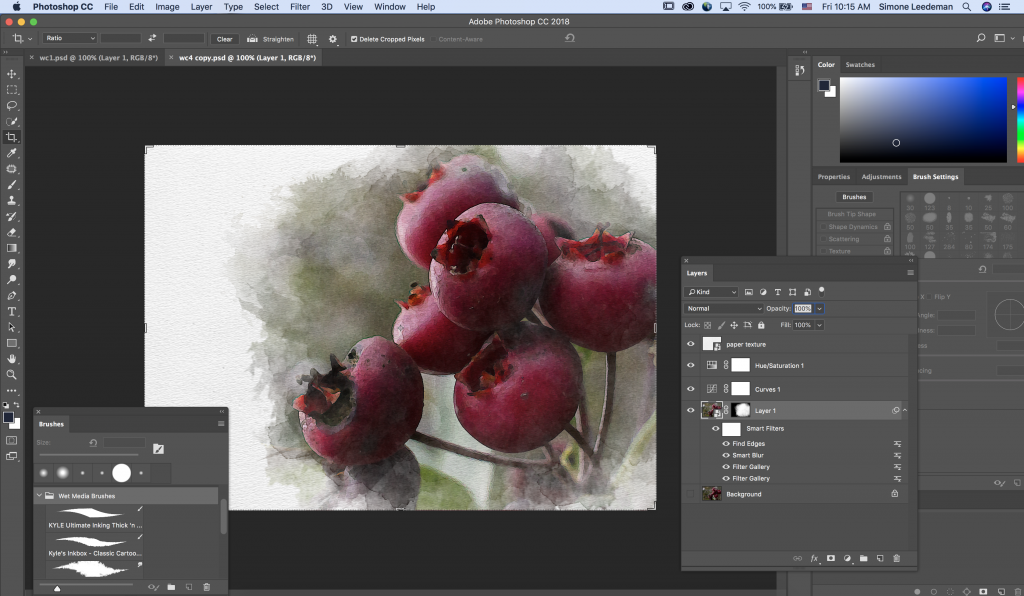Lyrical Essay
During this section in my English class, we read “Citizen: An American Lyric” by Claudia Rankine. While reading this collection of lyrical essays and poems, I was able to more thoroughly empathize and understand the point of view of people who have faced discrimination and micro aggressions in our society. After finishing this book, we applied what we learned to our own lyrical essays which we wrote about a person we interviewed with significantly different experiences than ourselves. In the interview, I was able to ask questions and learn more about the experiences of a Vietnam veteran, and create a lyrical essay based on his experiences.
Click here to access my Lyrical Essay
Citizen Diptych: Uncertainty
After writing my Lyrical essay, I was given two assignments in Design to correspond with my essay. This first piece is a diptych featuring a photo I took using a telephoto lens and edited using Adobe Photoshop, and a selection of the subject filled with a quote from my lyrical essay. Creating this piece not only allowed me to learn new skills in Photoshop including gradient mapping and text manipulation, but also taught me to step outside of my comfort zone and area of experience, and learn from the critiques of my classmates.
Click to view my Citizen Diptych Artist Statement

This is a screenshot of the Adobe Photoshop interface while I was in the process of creating the diptych.

Japanese Stab-Binding Book
The second piece I created in my Design class based off of my lyrical essay is the Japanese Stab Binding book. This form of Japanese book binding has been around for centuries, and our class made sure to appropriately follow the traditional style throughout the course of working on this book.
Creating this book was a long, meticulous process that was extremely rewarding in the end. We first began the process of making the content of the book by walking around the surrounding neighborhood near Freestyle and taking photos of nature using our macro lenses which allowed us to capture all of the small details of flowers, leaves, etc. Once we had a sufficient amount of photos, we brought them back to class for editing. We then used Adobe Photoshop to add a watercolor effect to each photo, which would then be printed on watercolor paper to appear as if it was a real painting.
This is a screenshot of Adobe Photoshop while I was in the process of editing my photo with the watercolor effect.

Next, we assembled our covers using pieces of board and Japanese paper. Once we finished making the covers, we repeated the process with a frame. Before glueing the frame to the cover, I strung traditional Japanese beads in a pattern before adding it to the frame. I then tore Japanese newspaper into pieces and dyed them using tea. After they were dry, I glued the pieces down on parchment paper to give a layered effect. Once cutting the paper to size, I used India ink and a traditional calligraphy brush to create illustrations on each of the five total papers. Using the same ink, I painted Kanji on partially translucent vellum paper, each character corresponding with printed quotes from my lyrical essay and interview. Once each of the pages was assembled, I added rice paper before finally measuring, finding a binding I liked and drilling the holes accordingly. Using a needle and thread, I bound the book and finally held the completed piece.
ARVE Error: Mode: lazyload not available (ARVE Pro not active?), switching to normal mode
When reflecting back on this project, I feel a sense of pride knowing how many minor details and pieces had to come together in order to make the finished project. In the process of making this book, I feel that I was able to add more to the story of my lyrical essay, while also gaining a broader appreciation for traditional Japanese culture and bookbinding overall. This project made me step out of my comfort zone by encouraging me to working more with my hands rather than solely relying on digital format.
